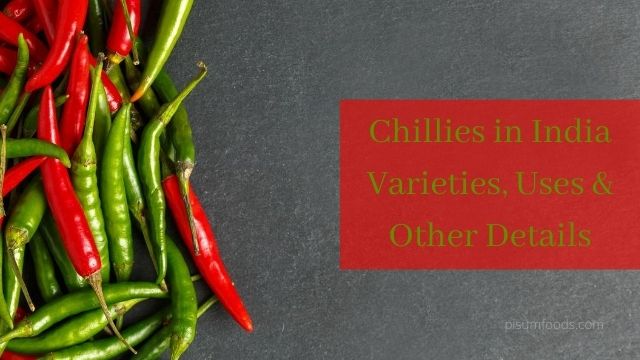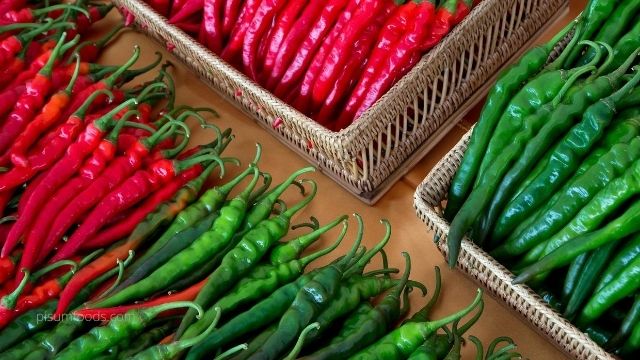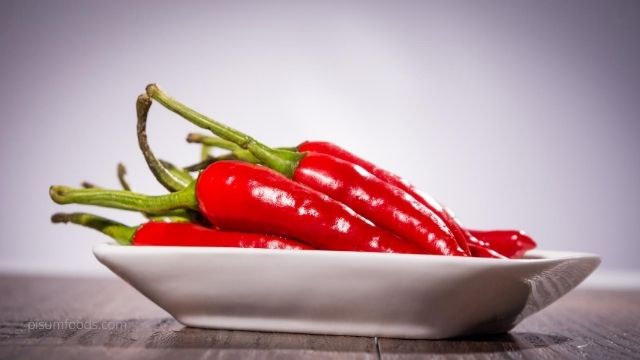 Translate
Translate Translate
TranslateIndia is the land of spices. For the majority of Indians, a dish lacking in spice or chillies is unfathomable. Most dishes served across India use chillies in some or the other way. Besides the unique taste and aroma, chillies in India also have various health and medicinal properties. If eaten moderately, the Indian chilli is said to be good for one’s health. There are over 400 varieties of chilli in the world.

Indian chilli history is pretty interesting! Even though chillies are largely used in Indian cuisine, they are not native to India. Chillies originated in Northeastern Mexico. Researchers have found evidence of 6000 years old cultivations of Chilli in Mexico. Later on, the chilli cultivation spread to North and South America, as civilizations started expanding their settlements and trade routes. The Portuguese introduced the first chillies to India in the 15th century. These Portuguese traders pushed their trade in India and other Southeast Asian countries. That’s broadly how chillies came to India. The traders used the well-known spice route to export chillies in the exchange of Black Pepper and other Indian spices.
Various types of Indian Chillies are popular across the world. Each type has a unique flavour and is used in different dishes. The varieties of chillies found in India include Kashmiri chilli, Guntur chilli, Jwala, so on and so forth. Here are the most popular varieties of chillies:
Kashmiri Chili is one of the most popular varieties of chillies and is widely used as a colour agent in many dishes. Red chilli powder from Kashmir is usually mild and is a must-have Indian spice. This variety of chilli is found in Kashmir and is the most sought after red chilli in India. The Kashmiri chilly is generally less hot or pungent, as compared to the other varieties of chillies found in India.
The Guntur variety of chillies is native to the Guntur district of Andra Pradesh. Guntur is the main producer and exporter of most varieties of chillies and chilli powder from India to various countries like Sri Lanka, Bangladesh, Middle East, South Korea, UK, USA and Latin America. Andhra Pradesh is thus known for its spicy dishes. Guntur Sannam, a type of Guntur chilli, is also cultivated in Madhya Pradesh.
The Jwala chilli, also known as finger hot pepper, is largely grown in Kheda, Mehsana and southern parts of Gujarat. This chilli is green in colour but turns red once it matures. This variety of chilli can even be grown at home. The Jwala chilli is easily available in the market throughout the year and very pungent in flavour.
The Byadgi variety of Chillies, grown in Karnataka is a popular variety of chilli. This variety is named after the town of Bydagi, located in the Haveri district of Karnataka. The Byadgi variety is known for its colour and pungency. This variety of chilli is known to be similar to paprika.
Boria Chillies are a variety of chillies especially known for their shape. These berry-sized chillies possess a moderate level of pungency. This variety of chillies is popularly used as Tadka for various Dals and Kadhis. The Boria variety chillies are dark red in colour and have a moderately spicy taste.
The Sankeshwari Chillies come from a place called Sankeshwar in Kolhapur, Maharashtra. This variety of chillies is widely used in Maharashtrian cuisine, especially in coastal cuisine. It’s a very spicy variety of chilli, often blended with different dry masalas to make the traditional garam masala powder. This variety of chillies is especially used in Fish Curries, Chicken Curries, Vegetables.

The Naga and Bhut Jolokia chillies are the spiciest varieties of chillies in the world. These varieties of chillies are cultivated in the Northeastern States of India including states like Nagaland, Assam, Arunachal Pradesh, and Manipur. As this variety is too hot to taste, it isn’t used regularly in Indian cuisine. Various regional communities use these peppers to make chutneys, curries, and pickles.
The Mathanias chillies are known for their use in Laal Maas, which is one of the most popular curries in Rajasthan. This variety of chillies bring vibrant colours to the dish and makes it appealing to the eyes. Due to the limited popularity of the Mathania variety of chillies its usage is limited to the regional dishes only. These chillies are usually red in colour and very spicy.
The Bhavnagari Chillies are primarily not hot peppers. Thus, it is easier to tolerate the heat. These chillies are usually green in colour and have a mildly Spicy or Moderately Spicy taste. This variety of chillies is popularly used in Bharwan Mirchi, Mirchi Pakoda and such other dishes.
Kanthari is known as the Bird’s Eye variety of chilli. This variety of chillies is widely found in the states of Kerala, Tamil Nadu, and Meghalaya. It’s a highly pungent variety of chillies and is not known for any significant cooking use. This variety is generally green and red in colour and is very spicy. It is popularly used in Kanthari Mulaku Chammanthi (Chutney), Kanthari Uppilittathu (Pickle) and Kerala’s Chicken Curry.
The Longi variety of chillies is found in Bhujia or any other Namkeen snacks. This variety of chillies is not extremely pungent, but it’s good enough to leave the mark on your palate. These chillies are red in colour and spicy in taste. They are used in many Veg. and Non-Veg. Curries, Namkeen Snacks.
Chillies have various uses. Red chillies are usually grounded into a powder and popularly used as a spice. They can also be dried or pickled in order to store them for a long period of time. Chillies are a popular ingredient in most Indian dishes and curries. Uses of chilli include the use to make sauces which can be used to add spice to other dishes. Besides their flavour, chillies also have various health benefits. Here are some key benefits of eating chillies:
Diarrhoea can be treated by chillies. Tablets made with the combinations of chillies, camphor, cumin seeds and asafoetida may be given in the dose of 125 gram to cure these diseases.
The application of a mix of red chillies medicated with castor oil is also helpful in easing pain and sprain.
Mustard oil medicated with red chillies may be applied to cure numbness.
Some research shows that eating chilli pepper may help to prevent diabetes due to its capsaicin component.
The alkaloid compound in chillies called capsaicin acts like an anti-bacterial, anti-carcinogenic, analgesic and anti-diabetic component.
Fresh red and green chilli are said to be rich in vitamin C. This helps in protecting from scurvy, boosts your immune system and works against free radicals.
Chilli pepper is loaded with antioxidants such as vitamin A, flavonoids, beta-carotene, alpha-carotene, lutein, zeaxanthin, and cryptoxanthin. These antioxidants help to fight against free radicals and protect your body from many diseases.
Chillies are loaded with numerous minerals like potassium, manganese, iron, magnesium, so on and so forth. All these minerals have various different health benefits.
Due to the presence of Capsaicin compounds in chillies, chilli pepper is widely used to prepare various ointments.
In some studies, it has been shown that a diet containing hot chillies reduces the risk of cancer. It has been shown that natural capsaicin slows down the growth of leukaemia cells and helps to specifically prevent prostate cancer.
Some research has also proved that chilli can help to combat headache, migraine and sinusitis owing to capsaicin control neuropeptide substance P that is the harbinger of migraine.
Capsaicin in chillies is thermogenic in nature. This helps to activate the metabolism adipose layer of the body and thus helps to melt fat to a certain extent.
Indian chilli benefits are numerous. The Indian chillies are largely demanded across the world today due to their unique taste and the various health benefits of chilli.

Low calories
Chillies have zero calories and therefore are a great spice for those on a strict diet. Chillies are also said to speed up your metabolism as much as 50% for up to three hours after consumption, ensuring a healthy and fit lifestyle.
Protect against cancer
Indian chillies are loaded with antioxidants and various vitamins and minerals. The antioxidants protect the body against free radicals by acting as natural scavengers. This is one of the important benefits of eating chili everyday.
Rich in beta-carotene
Chillies are rich in beta-carotene and pro-vitamin A. Vitamin A is the main vitamin in maintaining a healthy respiratory, intestinal, and urinary system. Vitamin A and vitamin C in the chilli peppers are also vital in building up your immunity against infections and illnesses.
Reduce Joint Pain
Chillies are said to be a natural source of pain relief for headaches and migraines and also can be used to reduce joint pain. You can apply chili pepper to the skin to reduce the presence of chemical P. Chemical P is the compound that is responsible for transmitting pain messages to the brain.
Fights Inflammation
Capsaicin’s valuable characteristic is that it inhibits substance P, which is a neuropeptide responsible for inflammatory processes. Capsaicin is also thought to be a potential treatment for a number of sensory nerve disorder like arthritis pain, diabetic neuropathy, and psoriasis.
Even though chillies have various health benefits they should be eaten in proportion. Eating too much spice also has a side effect.
It can cause abdominal pain, weakness, dizziness, diarrhoea, or nausea. In the worst situation, the sharpness of the spice can lead to circulatory problems with a shock. Stomach and skin irritation can also be toxic, if chilli is consumed in high quantities.
Side effects of chillies are true especially for sauces that contain the chilli extract oleoresin. If you try these sauces, at times you may also get breathing difficulties or blisters in your mouth. Not only does consuming extremely hot chilli burn your mouth from inside, but also is very irritating when evacuated from the body.
It is important to ensure that you wash your hands after touching chilli food items or chilies and do not touch your nose, eyes, mouth or any other sensitive body parts before you have washed your hands. The high amount of capsaicin in chillies is toxic and can be very painful.
Chillies are used in Indian cuisine in various different ways. It depends on the type of dish you’re making and the type of flavours you want for the dish. Following are some of the most popular ways to cook chillies:
Tempering or Tadka is one of the most common and popular uses of chilli. A Tadka is generally used to flavour the curries and rice preparations. For tempering, you can use green or red chillies. If you want the dish to be spicier, cut the chillies into half and then put them in the Tadka. This is an effective method to increase the spiciness of any vegetable curry or dal.
Since ancient times vegetables are pickled in India. The veggies were pickled so that people could enjoy them in the off-season. The pickled vegetables taste delicious and can be prepared using the old method of pickling. Mango pickles are the most famous but you can also make vegetable or chilli pickles at home. Pickles taste excellent with Roti-Sabzi, Paranthas or any such dish.
Indian chillies are used in making pastes and chutneys. By using chillies in a paste or a chutney, the flavours of your dish will be elevated. You can use green or red chillies in pastes and chutneys. The red ones are used to make red garlic chutney or coconut-based masala for fish curries. The red chillies are also used to prepare the quintessential Schezwan Chutney or Sauce for the Indo-Chinese dishes.
The Stuffed chilli also known as Bharwan Mirchi can be used as an appetizer for a full-course meal. For the stuffing, a grated coconut mixture, cheese-paneer mixture, potato mixture can be used. These classic stuffings go very well with the chillies. These chillies can be eaten with Phulkas or Bhakris too. Gram flour batter can also be used to fry the elongated large-sized chillies.
The deep-fried chillies are very famous in the Maharashtra region. You can enjoy these deep-fried dry chillies as an accompaniment with traditional dishes. The locals deep-fry the dried chillies and serve them as an accompaniment generally for lunch or dinner. You can get these chillies in the form of stuffed or plain chillies.
Chillies are also used for garnishing. You will occasionally see people using raw green chillies as a garnish for Biryanis and such other rice preparations. Dry red chilli flakes can also be used for Pizzas, French Fries, Parathas, Dosas, Sandwiches so on and so forth. You can also make chilli flakes at home using Byadgi or Guntur varieties.
India is the world’s largest producer, consumer and exporter of chilli. Red chillies are cultivated by Indian chilli exporters across India on around 792,000 hectares of land. The chilli producing states in India include Andhra Pradesh, Karnataka, Madhya Pradesh and Maharashtra. The crops are usually planted in August and September and harvested around March and April. Of the 1,376,000 million tons of red chilli produced in India every year, 70% is consumed domestically, while the other 30% is exported to different corners of the world. The Capital investments in cold storage in the chilli growing areas of India give sustained production and market share for Indian chilli. Dried chilli export from India is around 22% of all the spices exported from India.
Pisum Foods is one of the leading Indian Chilli exporters from India. They help their clients export various food products including fruits, vegetables, grains, pulses, oilseeds, so on and so forth. The executives at Pisum assist the clients with every step on the way right from documentation until the final delivery of the products. If you are looking for Chilli export from India, Contact Pisum Foods now!